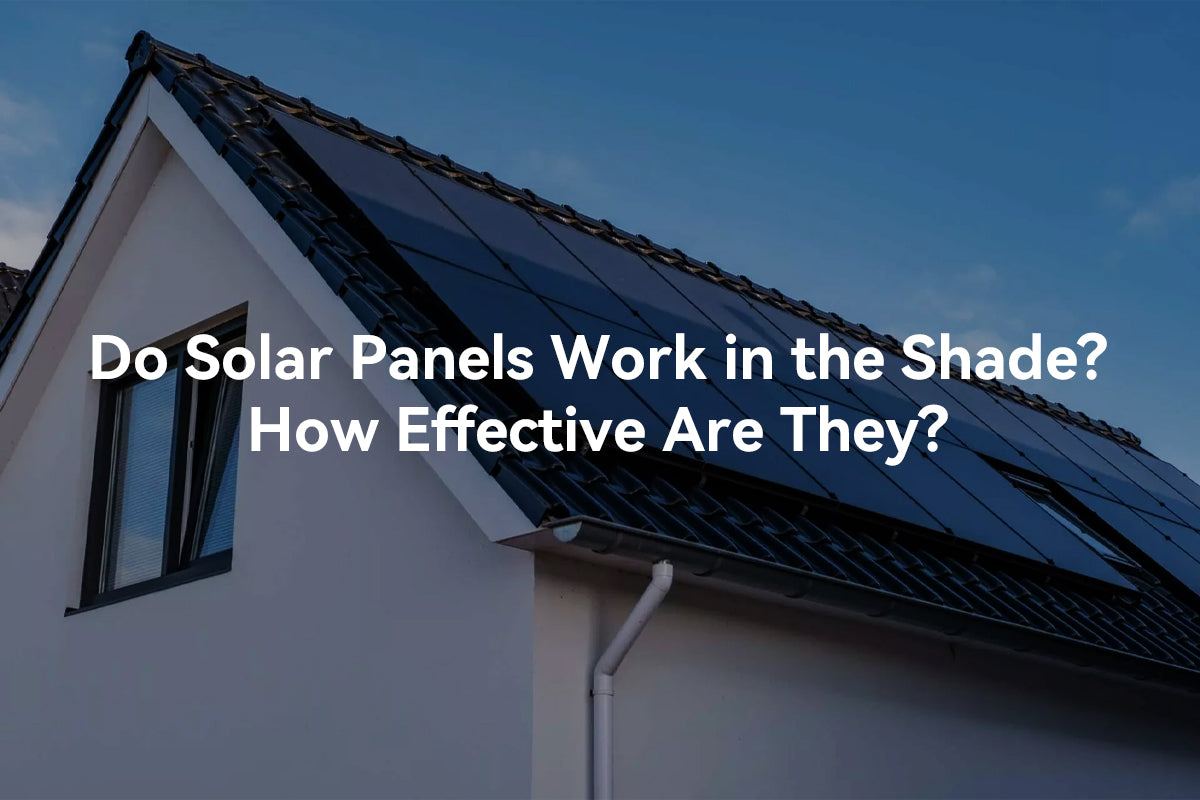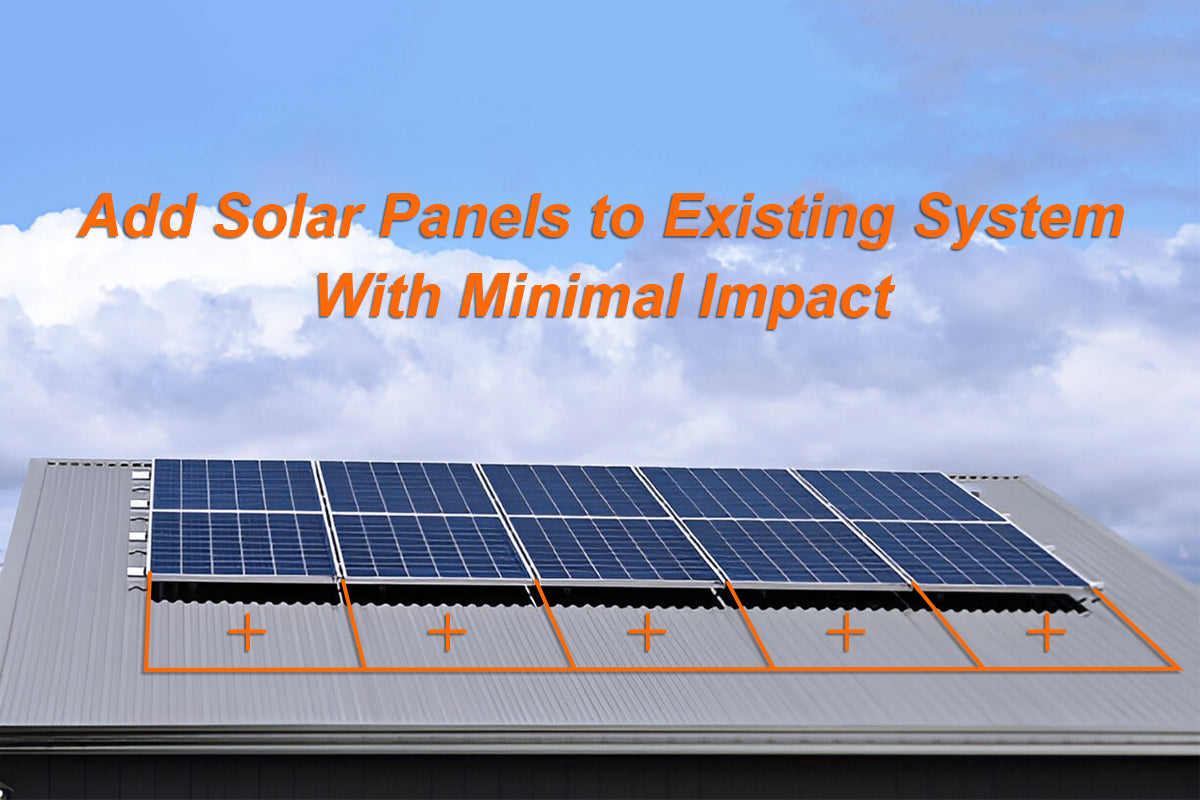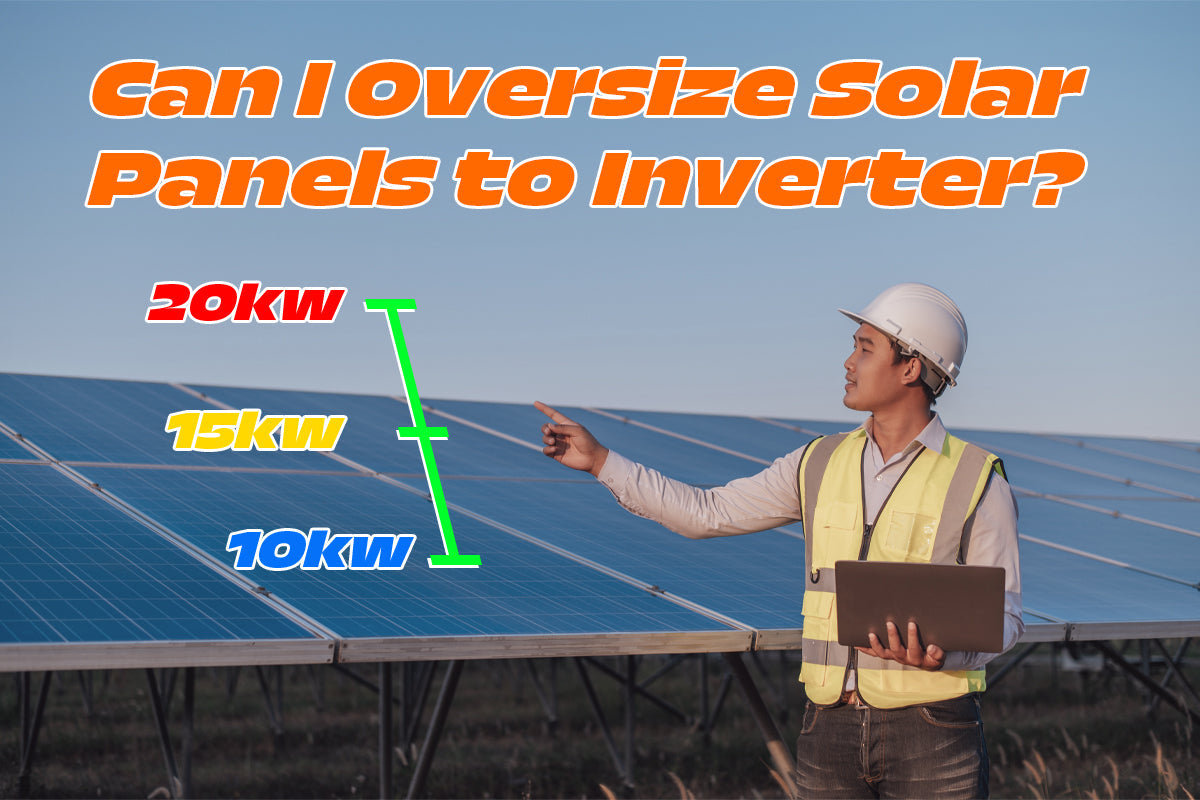Solar panels often encounter shading from various sources, which can be seasonal and unique to each home. Shading varies in nature, ranging from dynamic shading like moving clouds, snow, bird droppings, or dust to static shading like buildings or trees. Shading results from environmental obstructions, with dynamic sources being temporary and static sources more enduring.
Despite this, solar panels still work under shading. Most rooftop solar panels start generating electricity shortly after sunrise on clear days. But does shading affect the efficiency of solar panel power generation?
In this article, we will explain the impact of shading on their performance and efficiency, and present 3 flexible solutions for solar panel shading.
- What happens if one solar panel is shaded in the solar array
- How effective are solar panels in the shade?
- Solar panel shading solutions
- Solution1 - Micro Inverter
- Solution2 - Shade-Aware Inverter
- Solution3 - Multiple MPPT solar inverter
- Solution4 - Charge controller / Inverter for parallel operation
- Common solar lighting concerns
What happens if one solar panel is shaded in the solar array
Solar panels generate electricity through the photovoltaic effect, which occurs when sunlight strikes the surface of the solar cells within the panel. These solar cells are typically made of semiconductor materials, such as silicon, that absorb photons from sunlight and release electrons. This flow of electrons generates an electric current, which can be harnessed as electricity.
The principle of solar panels indicates that they produce electricity in direct correlation to sunlight exposure. Shading on a solar panel diminishes the sunlight reaching the cells, consequently lowering their electrical output.
Solar panels can be connected in series or parallel. However, even under identical lighting conditions and solar panel system specifications, shading affects the panels differently depending on their connection method.
How does shade affect solar panels in series?
In most cases, solar panels are connected in series. Solar panels are usually connected in series to increase voltage, reduce current losses, and simplify inverter design and installation.
However, if the installation site has shading, adding solar panels in series is not the best configuration. If one panel is shaded, the current will drop. In a series connection, the current is determined by the lowest value in the string.
Assume three 200w solar panels with a maximum power voltage of 21V and a maximum power current of 9.52A are connected in series. Under ideal conditions, the string will produce 600W of power.
If one solar panel is shaded, the current might drop to 5A, while the voltage remains unchanged. The final output will be 315W (5A x 21V x 3), and the overall string efficiency will decrease by 48.5%.
In this case, installing bypass diodes can isolate shaded solar panel, rerouting the current and “bypassing” the underperforming panels so they no longer affect the entire system. However, this still result in the loss of output from the bypassed panels. In the scenario described, the total power output of the string would be 400W.

How does shade affect solar panels in parallel?
In parallel-connected solar panel systems, the impact of shading is relatively minimal because in parallel circuits, voltage remains constant while currents add up. Taking three panels with maximum power voltage of 21V and maximum power current of 9.52A as an example, when they are connected in parallel, ideally, the system will generate 600W of power.
If one of the solar panels is shaded, reducing the current to 5amps, the total power output of the solar panel system would be approximately 505W ((9.52 + 9.52 + 5)A x 21V). This represents a 16% decrease in power generation efficiency.
How effective are solar panels in the shade?
As a rule of thumb, the energy produced by solar panels is approximately half when shaded from direct sunlight.
However, the efficiency of solar panels under shade does not have an exact value, as it is influenced by multiple factors. Even with identical solar panel specifications and equal shaded areas, the impact varies under different conditions. Factors such as light intensity, geographical location, roof tilt angle, and orientation all play a role.
Despite this, shading does not mean you cannot benefit from residential solar panels if your roof has shade throughout the day. Through carefully designed layouts or employing certain technologies, it is possible to overcome shading issues.
Solar panel shading solutions
The previously mentioned bypass diodes and parallel solar panels can somewhat mitigate the decline in power generation efficiency caused by shading, but they are not always the best solutions.
For instance, parallel strings might not meet voltage requirements, and bypass diodes can only reduce the power contribution of shaded solar panels to zero.
They cannot maximize the energy collected from the shaded panels to minimize losses.Beyond these two methods, we will introduce 4 types of devices to more flexibly maximize the power generation efficiency of solar panel systems, ensuring that shaded panels do not affect the performance of others in the system.
Solution1 - Micro Inverter
Microinverters are suited for handling shading issues because they convert DC to AC at the panel level, allowing each solar panel to operate independently of the others in the array. This means that even if one solar panel is shaded, it can still generate electricity from the available sunlight, while the other panels continue to produce power at their maximum capacity.
Note:
If you prefer to use string inverters, you can install power optimizers on each solar panel. However, power optimizers don't convert DC to AC directly.
Instead, they adjust and optimize the DC output from each panel before sending it to a central inverter for conversion to AC. This setup may result in some energy loss and could increase system maintenance costs and complicate future system expansion.
Solution2 - Shade-Aware Inverter
Some manufacturers integrate bypass diodes into their solar panels. Since bypass diodes allow the inverter to "skip" shaded panels rather than operate at a lower current, the power curve of a partially shaded array looks different from that of an unshaded array. As shown in the figure below, the former will have multiple peaks.

However, traditional Maximum Power Point Tracking (MPPT) algorithms cannot track the Global Maximum Power Point (GMPP) under partial shading, causing the inverter to choose a suboptimal MPP (Local Maximum Power Point).
To address this issue, you can opt for a shade-aware inverter, such as the PowMr SOLXPOW series energy storage inverter. It features an advanced Shade Scan MPP Tracking Algorithm, which continuously scans the power points at the string level at regular intervals to determine the exact maximum power point (GMPP). Subsequently, it adjusts the operating point based on this GMPP to maximize the yield of your PV plant in the event of shading.
Solution3 - Multiple MPPT solar inverter
Multi-MPPT inverters are commonly used on roofs with various orientations and offer a robust solution for shading. By carefully planning the quantity and layout of rooftop solar arrays based on roof structure and lighting conditions, each array can be connected to inverters equipped with two or more Maximum Power Point Trackers (MPPT). These trackers adjust voltage to consistently match the inverter's preferred input range, maximizing energy extraction from every solar panel string, even under partial shading.
Essentially, multi-MPPT inverters enable independent operation of each string, optimizing output under varying shading conditions. This flexibility ensures shading minimally impacts system performance, reducing energy loss and enhancing overall efficiency.
Solution4 - Charge controller / Inverter for parallel operation
Solar charge controller for parallel operation
Similar to multiple MPPT inverters, you can flexibly design each string according to actual conditions and connect them to each solar charge controllers in parallel connection.
Once the entire solar power system is assembled, each charge controller optimally tracks the operating points of different solar panel systems. Subsequently, specialized parallel communication ensures data exchange to maximize energy production and safely charge the batteries.
Solar inverter for parallel operation
The inverters for operation in parallel within the system manage separate strings, ensuring shaded and sunlit solar panel arrays operate independently and efficiently. This setup not only optimizes electricity generation but also facilitates future scalability of the exisiting solar panel system.
These inverters are capable of accommodating larger AC loads and expansions, making them versatile and cost-effective compared to microinverters. This design ensures that each array operates at its peak performance, unaffected by the conditions of adjacent arrays.Overall, parallel inverters offer robustness in system design, supporting both current operations and future growth in solar energy capacity, all while potentially reducing overall installation costs.
Common solar lighting concerns
Can solar panels work without direct light
Solar panels can generate electricity even without direct sunlight. They can still produce power on cloudy days or when the sky is partially overcast. This is because they can harness diffuse sunlight and still convert it into electricity through their photovoltaic cells. While they are most efficient under direct sunlight, they can operate at reduced efficiency levels under indirect light conditions.
Do solar panels work in cloudy or rainy day?
Yes, solar panels can work on both cloudy and rainy days. While their efficiency may be lower compared to sunny days, they can still generate electricity. Cloudy weather reduces the intensity of sunlight reaching the panels, but they can still convert available light into electricity. Rain does not typically affect their functionality, although very heavy rain or debris could temporarily reduce output until cleaned.



